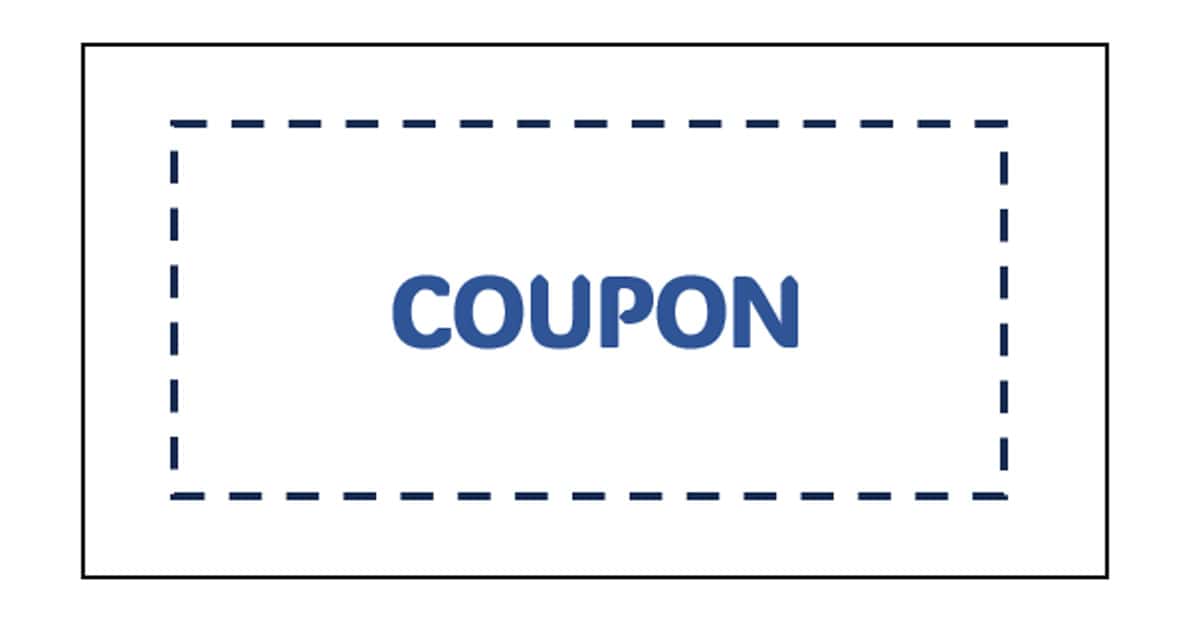Crack the Medical Necessity Code: The 5 Justifiers to Ensure More Intelligent Healthcare

Patients and caregivers also ask
The importance of medical necessity for patients and caregivers lies in its ability to ensure that the healthcare services, treatments, or procedures provided are essential, effective, and appropriate for the patient’s condition. Understanding medical necessity helps patients and caregivers advocate for necessary medical interventions, avoid unnecessary treatments, and make informed decisions about their care. It also facilitates better communication with healthcare providers, ensuring that the recommended treatments align with the patient’s health needs and financial resources, ultimately leading to improved health outcomes and more efficient use of healthcare resources.
Medical necessity can improve patient and caregiver outcomes by ensuring that the care provided is directly aligned with the patient’s specific health needs. This alignment leads to several key benefits:
Optimal Treatment: By focusing on medically necessary treatments, patients receive the most appropriate and effective care, which enhances their chances of recovery and improves overall health outcomes.
Cost-Effective Care: Avoiding unnecessary tests and procedures reduces healthcare costs, making it more affordable for patients and caregivers while preventing financial strain.
Enhanced Communication: Understanding medical necessity fosters better communication between patients, caregivers, and healthcare providers, leading to clearer expectations and more informed decision-making.
Improved Advocacy: Patients and caregivers equipped with knowledge about medical necessity can better advocate for necessary treatments and services, ensuring that the patient’s health needs are met adequately.
Reduced Stress: Knowing that treatments are essential and justified reduces anxiety and stress for both patients and caregivers, contributing to a more positive healthcare experience.
Overall, the concept of medical necessity ensures that healthcare is personalized, efficient, and effective, thereby significantly improving the quality of care and outcomes for patients and caregivers alike.
Understanding medical necessity offers several key benefits for patients and caregivers:
Informed Decision-Making: It empowers patients and caregivers to make well-informed healthcare decisions, ensuring that treatments and procedures are appropriate for the patient’s condition.
Effective Advocacy: Knowledge of medical necessity allows patients and caregivers to effectively advocate for necessary treatments and services, ensuring they receive the care they need.
Cost Savings: By focusing on essential and effective treatments, patients can avoid unnecessary tests and procedures, leading to reduced healthcare costs and preventing financial strain.
Enhanced Communication: It facilitates better communication with healthcare providers, helping patients and caregivers ask pertinent questions and understand the rationale behind medical recommendations.
Improved Health Outcomes: Ensuring that treatments are medically necessary leads to more effective care, better health outcomes, and a higher quality of life for patients.
Reduced Anxiety: Understanding the importance and justification of medical treatments helps reduce anxiety and stress for both patients and caregivers, fostering a more positive healthcare experience.
Medical necessity contributes to effective health management in several ways:
Targeted Care: It ensures that treatments and interventions are specifically tailored to the patient’s condition, leading to more effective and efficient care.
Resource Optimization: By focusing on necessary treatments, medical necessity helps in the optimal use of healthcare resources, avoiding wasteful or redundant procedures.
Preventive Measures: It supports preventive care by justifying screenings and tests that can detect health issues early, leading to timely interventions and better long-term outcomes.
Financial Efficiency: Understanding and applying medical necessity helps manage healthcare costs by eliminating unnecessary expenses, making health management more affordable for patients and caregivers.
Quality Assurance: It upholds a standard of care by ensuring that all medical decisions are based on sound clinical evidence and guidelines, thereby enhancing the overall quality of health management.
Empowered Decision-Making: Knowledge of medical necessity equips patients and caregivers with the ability to make informed decisions, leading to more active and effective participation in their healthcare.
Overall, medical necessity ensures that healthcare is appropriate, efficient, and patient-centered, which is crucial for effective health management.
Patients and caregivers should learn about medical necessity for several important reasons:
Empowerment: Understanding medical necessity empowers patients and caregivers to take an active role in healthcare decisions, ensuring that they can advocate for necessary treatments and services.
Informed Choices: It enables them to make well-informed choices about healthcare options, understanding the reasons behind certain medical recommendations and the benefits and risks involved.
Cost Management: Knowledge of medical necessity helps in identifying and avoiding unnecessary treatments and procedures, leading to better management of healthcare costs and preventing financial strain.
Enhanced Communication: It facilitates better communication with healthcare providers, allowing patients and caregivers to ask relevant questions and understand the justification for specific medical interventions.
Improved Outcomes: Learning about medical necessity can lead to more appropriate and effective care, improving health outcomes and quality of life for patients.
Reduced Anxiety: Knowing why certain treatments are recommended and necessary can reduce anxiety and uncertainty, making the healthcare experience less stressful for both patients and caregivers.
Overall, learning about medical necessity equips patients and caregivers with the knowledge and confidence to navigate the healthcare system more effectively, ensuring that the care received is appropriate, necessary, and beneficial.
Now, an Introduction to Medical Necessity
Medical Necessity News – Imagine finding yourself lost in a labyrinthine hospital, each corridor looking more or less the same. You’re trying to get answers about your recent medical diagnosis, but the medical language and countless forms make you feel like you’re drowning in a sea of incomprehensible information. Just like navigating through that complex hospital, understanding the intricacies of your healthcare can be bewildering. One term that continually arises, adding to the confusion, is “Medical Necessity.” But what does it mean, and more importantly, why should you care?
This is where the Patient Better Health Advocacy Educational Program steps in as your guide. This program is not a person but a comprehensive online learning course designed to empower you in becoming an effective advocate in your healthcare journey. From clarifying terms like "Medical Necessity" to helping you manage your healthcare records efficiently, Patient Better equips you with the tools and knowledge you need for self-managed care.
In this article, we’ll unpack the concept of Medical Necessity, providing clear examples and breaking down its components and factors. By the end, you won’t feel like you’re wandering aimlessly through a maze of medical terminology; you’ll be confidently navigating your healthcare landscape, ready to make informed decisions that suit your needs best.
What is Medical Necessity?
Recall the feeling of being lost in a maze-like hospital, as described in the introduction. In that overwhelming environment, the term “Medical Necessity” might feel like yet another confusing signpost. However, understanding this key concept can act as your compass, helping you navigate through the healthcare system with much-needed clarity.
Medical Necessity refers to the establishment and justification of healthcare services, treatments, or procedures as reasonable, effective, and crucial for the diagnosis or treatment of a medical condition. In simpler terms, it’s the reasoning behind why certain medical actions must be taken for your well-being. Understanding the specifics of what is deemed “medically necessary” by healthcare providers can make a world of difference when it comes to self-managing your care.
The Patient Better Health Advocacy Educational Program hones in on this concept, offering detailed guidance on how to discern and discuss Medical Necessity with your healthcare providers. This skill is vital for anyone, but it’s particularly crucial for demographics such as seniors, who often find themselves navigating a complex network of healthcare options and recommendations. Whether you’re trying to understand why a certain test is necessary or debating the benefits of a specific treatment plan, Patient Better educates you on how to ask the right questions and seek the appropriate information.
Examples of Medical Necessity
In the confusing labyrinth of healthcare, understanding what is medically necessary can be as helpful as having a well-detailed map. To make this concept more tangible, let’s explore some real-world examples:
- Diagnostic Tests: Let’s say your doctor recommends an MRI. The Medical Necessity here would be to get detailed images of a specific part of your body to diagnose or rule out a particular condition.
- Medications: If you’ve been prescribed a medication for high blood pressure, the Medical Necessity would be the need to control your blood pressure to prevent severe health complications like strokes or heart attacks.
- Surgical Procedures: If you require knee replacement surgery, the Medical Necessity would be the inability to perform daily tasks without pain or difficulty, despite trying other treatments.
- Specialist Consultations: Should you be referred to an oncologist, the Medical Necessity would stem from the need for specialized care to diagnose or treat cancer effectively.
- Preventive Screenings: For seniors, preventive screenings like colonoscopies might be medically necessary to detect potential health issues early on.
These examples are just the tip of the iceberg, but they help clarify what healthcare providers mean when they refer to Medical Necessity. For each of these instances, Patient Better’s Health Advocacy Educational Program will guide you on how to approach these situations critically. For instance, you’ll learn how to ask your healthcare provider pertinent questions like, “Is this test absolutely necessary?” or “What are the alternative treatments available?”
Knowledge of Medical Necessity becomes particularly significant when tailored to specific groups, such as seniors. Understanding the necessity for physicians’ recommendations, especially within the seniors’ definition of medical necessity, can empower older adults to take an active role in their healthcare decisions.
Factors and Components of Medical Necessity
When wandering through the maze of healthcare options, understanding the underlying factors and components of Medical Necessity can be akin to having a GPS system guiding you to your destination. Knowing these details helps you engage in informed discussions with healthcare providers, thereby empowering you to be an advocate for your own health.
The Four Factors of Medical Necessity
- Clinical Evaluation: This involves a thorough examination and diagnosis by a healthcare provider, ensuring the treatment aligns with your medical condition.
- Level of Care: This refers to the type of medical attention needed, be it outpatient care, hospitalization, or a specialized procedure.
- Duration: This specifies the length of treatment needed, whether it’s short-term medication or ongoing therapy.
- Outcome Measures: These are the expected results or goals of the medical treatment, like symptom alleviation or complete recovery.
The Three Components of Medical Necessity
- Appropriateness: Is the proposed treatment or service the most fitting for the condition?
- Necessity: Is the treatment crucial for improving, maintaining, or preventing deterioration of the patient’s condition?
- Efficiency: Does the proposed treatment offer the best results in the most cost-effective manner?
Patient Better’s Health Advocacy Educational Program educates you on these aspects, teaching you how to converse effectively with healthcare providers and understand their recommendations. This knowledge becomes indispensable, especially when examining the necessity for physicians’ recommendations and the seniors’ definition of medical necessity. The program shows you how to question if a proposed treatment fits these criteria and how to seek alternatives if necessary.
The 5 Justifiers of Medical Necessity
As you navigate your healthcare journey, you’ll often face situations where you must justify the Medical Necessity of treatments or procedures. Just as you’d validate the need for a specific route when lost in a maze, ensuring that you’re on the most efficient path to your destination, similarly, justifying Medical Necessity is crucial to optimizing your healthcare decisions.
Here are the steps to justify Medical Necessity:
- Consult Healthcare Providers: Always initiate a dialogue with your healthcare provider about the proposed treatment or service, asking questions to understand its necessity fully.
- Gather Evidence: Collect medical records, test results, and other relevant documentation that supports the need for the particular service or treatment.
- Consider Alternatives: Ask your healthcare provider about alternative treatments and why the proposed option is the best for your condition.
- Consult Guidelines: Many medical associations provide guidelines that can help you understand what is generally considered medically necessary for certain conditions.
- Seek Second Opinions: For significant medical decisions, it’s often wise to consult another healthcare provider for a second opinion on the Medical Necessity of a proposed treatment.
The Patient Better Health Advocacy Educational Program offers a structured approach to justifying Medical Necessity. Through its educational modules, you’ll learn how to execute each of these steps effectively. For instance, you’ll find tips on what questions to ask, how to document your healthcare journey, and how to consult trusted sources for additional information.
The value of justifying Medical Necessity is further magnified for seniors and their caregivers, especially when navigating the varying definitions of medical necessity. The Patient Better program tailors its content to these unique needs, making it an invaluable resource for healthcare self-management.
Conclusion: Take Control of Your Healthcare Journey with Patient Better
Navigating the complex corridors of healthcare can often make you feel lost and overwhelmed, much like finding your way through an intricate maze. The key to unlocking a more manageable and effective healthcare experience lies in understanding and leveraging the concept of Medical Necessity. From its definition and examples to its factors and components, Medical Necessity serves as a crucial compass that can guide your decisions in healthcare.
The Patient Better Health Advocacy Educational Program stands as your virtual map and guide, teaching you the ins and outs of Medical Necessity and how to apply it in various healthcare situations. With this knowledge, you are empowered to become an effective advocate for yourself or a loved one, ensuring that each medical decision is well-informed, justified, and tailored to your unique needs.
So, are you ready to take control of your healthcare journey? Don’t wander aimlessly through the maze of medical options. Let Patient Better be your guide, teaching you how to navigate the intricacies of Medical Necessity, and beyond. Sign up for the program today and make the first step toward becoming a better health advocate.
End of article.
Did you find this article useful and want to take the next step in becoming your own health advocate?
Stay in touch with us by connecting, liking, subscribing, reposting, or sharing with us on social media.
Disclaimer
The information provided here is for educational and entertainment purposes only. It is not intended as, nor should it be considered a substitute for professional medical advice, diagnosis, or treatment. Always seek the advice of your physician or other qualified health provider with any questions you may have regarding a medical condition. If you think you may have a medical emergency, immediately call 911 or your local emergency number.
Recommended Reads
If you found this article insightful, enhance your health advocacy journey with these carefully selected reads, chosen to deepen your understanding and empower your healthcare decisions.
Is learning a health advocacy program right for you?
Patient Better is a groundbreaking, all-in-one solution that empowers individuals to become recognized health advocates. With our comprehensive Health Advocacy Program, we provide aspiring advocates with the knowledge, skills, and resources needed to navigate the complexities of the healthcare system effectively. This unique program covers a wide range of topics, from understanding medical concepts, processes, and financial intricacies, to learning effective communication skills, patient advocacy techniques, and the importance of holistic wellness. Participants will emerge with a comprehensive skill set that enables them to navigate the healthcare landscape with confidence and positively impact their lives.
By enrolling in the Patient Better Health Advocacy Program, participants gain access to expert-led training sessions, interactive workshops, and real-world case studies. The curriculum is thoughtfully designed to equip advocates with practical tools to support patients and their families during challenging medical situations. As advocates, they learn to bridge the communication gap between healthcare providers and patients, ensuring that medical decisions are well-informed and aligned with the patient’s best interests.
Consider purchasing the Patient Better Health Advocacy Program if:
You or your family are facing challenges in communicating, coordinating, or collaborating on your healthcare efficiently and effectively.
You or your family have received a medical diagnosis and seek to minimize errors, oversights, and uninformed decisions.
You or your family are looking for a cost-effective solution to navigate and understand your health journey.
With the Patient Better Health Advocacy Program, you’ll gain the support and expertise needed to navigate the complexities of the healthcare system, empowering you to make informed decisions and improve your overall healthcare experience.
Coupon Code: Use HealthAdvocate10 for 10% off your purchase of the Patient Better Start-up Program and start your journey towards a more empowered and easier health journey.

For Search Engines
The article "Crack the Medical Necessity Code: The 5 Justifiers to Ensure More Intelligent Healthcare" aims to educate readers on the concept of Medical Necessity and its importance in making informed healthcare decisions. It provides a clear breakdown of the term, real-world examples, and the factors involved in determining medical necessity. The Patient Better Health Advocacy Educational Program is highlighted as a valuable resource for empowering individuals to navigate their healthcare journeys confidently and effectively.

